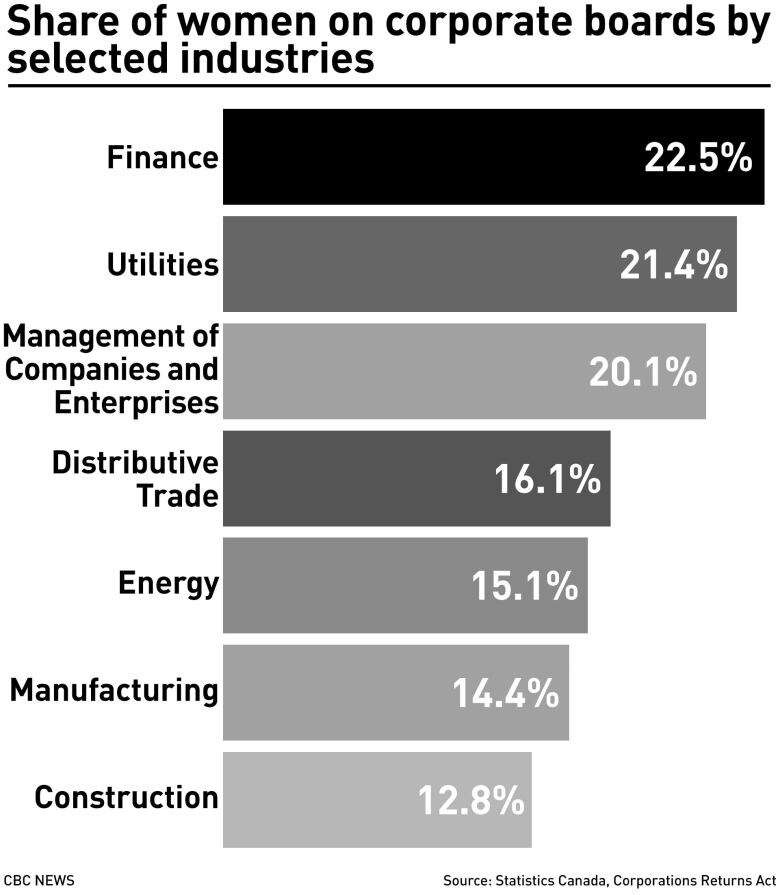Women hold less than 20% of positions on corporate boards, StatsCan finds
Study says more than half of boards in Canada filled entirely by men

Less than 20 per cent board directorships in Canada are held by women, according to new data released by Statistics Canada Tuesday.
The numbers are based on 2016 data collected through the Corporations Return Act. The gender-based study analyses diversity within corporate boards in Canada and highlights women in leadership roles across public, private and government corporations.
It found that women hold 19.4 per cent of board seats.
In 2016, 56 per cent of corporate boards were filled entirely by men, while another28 per cent of corporations had only one woman member. Just15.2 per cent had more than one woman.

CybeleNegris, co-founder and chief executive of Webnames.ca, saidCanada is making slow progress toward gender parity in the boardroom.
Negrissaid she hopes organizations start to understand the benefits of having a diverse board of directors. Adiverse board allows for constructive debate and conversation which helps drive innovation and change, she said.
"Boards should reflect, for any organization, their customers, their employees and then their key stakeholders," Negris said.
"But if you have everybody who's sitting on the board who's exactly the same age, race, gender, background you name it it's really difficult to have differing opinions and ideas to drive that change and innovation."
Negris sits on a number of boards, including those of The Royal Canadian Mint and the British Columbia Automobile Association. She is also a member of the regional ambassador council for Women Get on Board, an organization that connects and empowers women to corporate boards.
Deborah Rosati,the founder and chief executive of Women Get on Board,said there is a lot of awareness surrounding the business benefits of having women on boards, but the reason why change is so slow comes down to board renewal. If there are no age limits or term limits in place, there willbe limited seats available for more women to join, she said.
As a woman who has been on numerous boards herself, she knows the challenges women face at the boardroom table well.
"Finding your voice is really, really important for you to be effective as a director," Rosati said.
"As a woman you just have to work harder and make sure your voice is heard."
Government boards highest
Government business enterpriseshad the highest share of women on corporate boards at 28.8 per cent followed by public corporations at 20.5 per cent. Private corporations had the lowest representation of women on boards at 17.4 per cent.

The study also foundthat corporations were more likely to have only one woman on their boards withjust 5.5 per cent having three or more female members.
Statistics Canada also looked at the relationship betweendomestic andforeign ownership of these operations and the presence of women on their boards. Boards controlled by foreign entities made up less than one-third of the boards looked at in the study.
Canadian-controlled entities had the highest number of women on boards at 21.3 per cent. France came second at 17.5 per cent followed by the United Kingdom at 17.1 per cent.
Service industries had the largest share of women on corporate boards. This includes finance at 22.5 per cent, utilities at 21.4 per cent and management of companies and enterprises at 20.1 per cent.
The construction and manufacturing sector had the lowest share of women at 12.8 per cent and 14.4 per cent respectively.












_(720p).jpg)


 OFFICIAL HD MUSIC VIDEO.jpg)
.jpg)



























































































